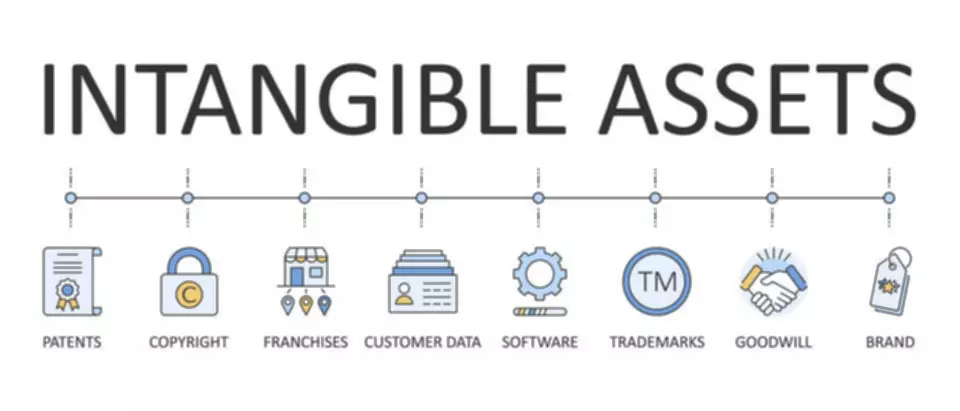Content

For example, continuing competition with Apple may cost the company more than if it acquires the brand for its own benefit. Companies typically only have goodwill on their balance sheets if they purchase another company or asset for more than the book value or fair market value of the company or asset.
- This doesn’t seem to be an issue during the acquisition process, since the acquirer has already done his homework on what to pay.
- Below is a screenshot of how an analyst would perform the analysis required to calculate the values that go on the balance sheet.
- Goodwill represents a certain value that may be obtained by one company when it purchases another.
- You would then subtract your net identifiable assets from your purchase price to determine the excess purchase price.
- Therefore, amortization is considered more appropriate as it charges reduction in goodwill in the period expected to have been affected.
- An actual figure or dollar amount must exist in order to record and report it as an intangible asset on the balance sheet.
The acquisition creates value for the acquirer, regardless of the value of the target company. By buying another company, the acquirer can increase its position against competitors (e.g., increase market share and market power) or provide benefits through synergy. Several reasons explain why goodwill arises, and companies are willing to pay more than the book value of the target company. If, in subsequent years, the fair value decreases further, then it is recognized to the extent of only $5 million.
Part 2 of 4:Calculating Negative Goodwill
To Be Tested For ImpairmentGoodwill impairment is the process of writing off the accounting charge amounting to the excess of the acquired asset’s book value as recorded in the financial statements over its fair value. A higher impairment charge reflects the company’s irrational investment decisions. Shown on the balance sheet, goodwill is an intangible asset that is created when one company acquires another company for a price greater than its net asset value. Unlike other assets that have a discernible useful life, goodwill is not amortized or depreciated but is instead periodically tested for goodwill impairment. If the goodwill is thought to be impaired, the value of goodwill must be written off, reducing the company’s earnings. Accounting Tools reports that going-concern value is the value an appraiser assigns to a business that is currently in operation. Appraisers assign this value under the premise that a business will continue to operate in a manner consistent with its intended purpose after its purchase, which causes it to be worth more than the sum of its parts.
The amount which the acquirer will pay for the target firm over the fair value of the target value is what usually makes up the targets goodwill. If the acquirer more than it is supposed ton pay for the target company, then it will be registered as positive goodwill. On the other hand, negative goodwill arises when the acquirer pays less than the book value of the target firm. Negative goodwill actually occurs when the target firm is purchased in distress, that is when the target firm is sold due to a number of unfavorable events. Goodwill is usually denoted as intangible assets on an acquirers balance sheet, and it is filed under the long-term assets account. Goodwill is generally called an intangible asset since it isn’t a physical assets unlike machineries and buildings. Goodwill accounting is the process of valuing and recording intangibles such as company reputation, customer base, and brand identity.
You Might Be Worth More Than Your Books Indicate: Why You Need to Consider Goodwill in Accounting
While companies will follow the rules prescribed by the Accounting Standards Boards, there is not a fundamentally correct way to deal with this mismatch under the current financial reporting framework. Therefore, the accounting for goodwill will be rules based, and those rules have changed, and can be expected to continue to change, periodically along with the changes in the members of the Accounting Standards Boards. The current rules governing the accounting treatment of goodwill are highly subjective and can result in very high costs, but have limited value to investors. AmortizationAmortization of Intangible Assets refers to the method by which the cost of the company’s various intangible assets is expensed over a specific time period.
- As such, it can’t be bought or sold independently, unlike intangible assets such as copyright, for example.
- Goodwill is a special type of intangible asset that represents that portion of the entire business value that cannot be attributed to other income producing business assets, tangible or intangible.
- Then, add the fair value of any intangible assets, such as the value of any patents, licenses, and agreements, as well as the perceived value of the company’s brand name.
- When you acquire a new business, you’re not just purchasing their contracts, equipment, real estate, and inventory.
- Goodwill is an intangible asset that represents non-physical items that add to a company’s value but can’t be easily identified or valued.
- If the fair value decreases further, then a decrease in fair value is apportioned among all the assets.
- The authors and reviewers work in the sales, marketing, legal, and finance departments.
Also, intangible assets have a finite life, while goodwill has an infinite life. It is quite easy to calculate goodwill in theory, but the practical aspect is quite complicated. This is due to the different assets and liabilities that go into the calculation.
Goodwill (accounting)
If a business is purchased for more than its book value, the acquiring business is paying for intangible items such as brand recognition, skilled labor, customer loyalty etc. Remember to record goodwill as a non-current asset since it is considered a long-term investment. Though not required by generally accepted accounting principles, or GAAP, rules, goodwill can be amortized for up to 10 years. With all of your calculations completed, you can now calculate goodwill.
Goodwill (Accounting): What It Is, How It Works, How To Calculate – Investopedia
Goodwill (Accounting): What It Is, How It Works, How To Calculate.
Posted: Sun, 26 Mar 2017 05:49:00 GMT [source]
For example, if ABC Company has a valuation of $20B and XYZ Company acquires it for $22B, it means XYZ Company believes it’s worth that much—or will be soon. Often, this premium is represented against the target company’s book value. Imagine that in the previous example, the value of the allocation assets was instead $4 million. The result of this is that no negative goodwill is recognized on the balance sheet or income statement of the purchaser.
Businesses are required to review this annually, as well as when a business is first acquired, per the FASB. This means company X paid $800,000 premium above the company’s net identifiable assets to acquire its unidentifiable assets, which add to its earning power. As your business reaches more people, the value of your business increases as well. It’s difficult to put a price on the value of brand recognition or intellectual property, but both of those things are reflected in goodwill.

Deduct the fair value adjustments from the excess purchase price to calculate goodwill. This will be recorded in the acquirer’s balance sheet after the acquisition.
Does a Sole Proprietorship Law Firm Have Goodwill Depreciation?
Goodwill tends to represent the intangible, long-term assets from the acquisition of one company by another. The company’s brand-name best-selling products or its lengthy library of intellectual property. Whether that goodwill will actually amount to the premium paid for it is what many companies find themselves asking long after the what is goodwill transaction is complete. When a business valuation is performed, it can be tricky to accurately value intangible assets such as goodwill and its impairment. When a valuation becomes complex, it is standard practice to consult with a valuation firm. We will get you connected with one of our strategic partners for your valuation needs.
- This is effectively a gainon acquisition ordiscounton purchase as buyer has paid lesser than what it should have.
- Goodwill is an intangible asset that arises when a business is acquired by another.
- This makes it very easy to over-estimate goodwill—a situation that leads to a goodwill impairment.
- The account represents intangible assets, such as a company’s brand name or reputation, that have value but are not physical assets.
- Before we can talk about goodwill accounting, we’ll need to explain exactly what goodwill is and why it’s so important.
- Add up the net fair value of all of the company’s tangible assets, including current and fixed assets.
- To Be Tested For ImpairmentGoodwill impairment is the process of writing off the accounting charge amounting to the excess of the acquired asset’s book value as recorded in the financial statements over its fair value.
Adding up the values of all the identifiable assets will give total value of assets identified at the time of acquisition. Negative goodwill occurs when a firm is sold for less than its fair market value due to the prices https://www.bookstime.com/ of its assets. To calculate goodwill, add up the net fair value of all of the company’s tangible assets, including current and fixed assets. Remember that any liabilities present must be subtracted from this value.